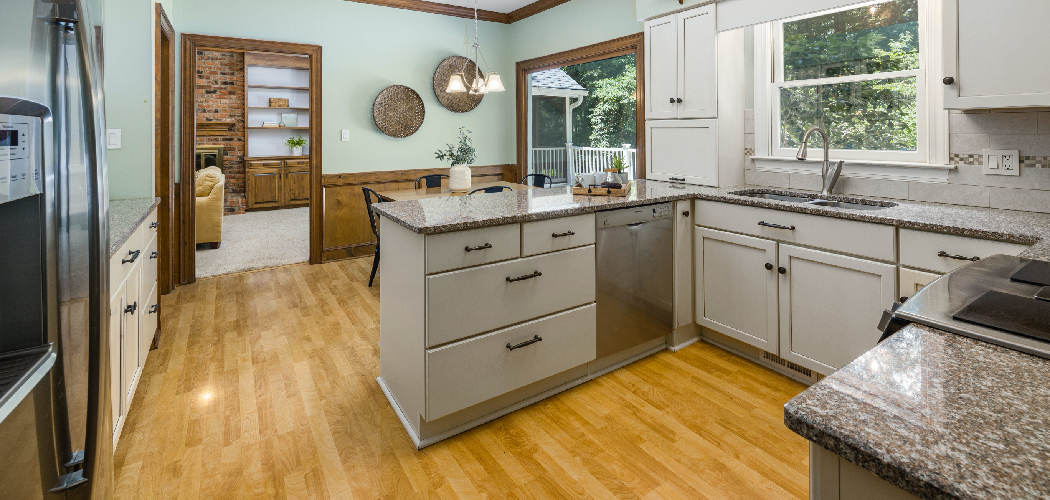Are you looking for ways to protect your precious wood floors from the wear and tear of a busy kitchen? From spilled liquids to scuffs caused by furniture, there are many potential sources of damage that can be easily avoided with a few simple steps.
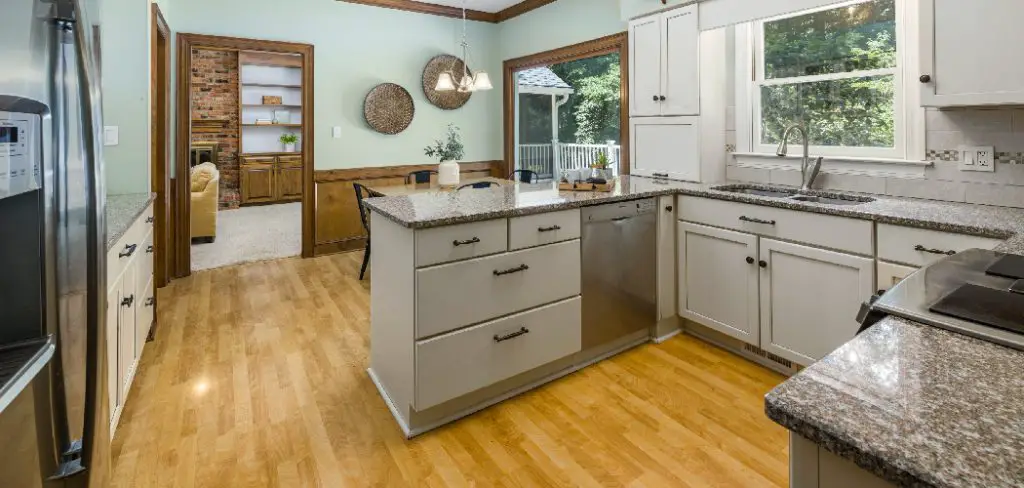
In this blog post, We will provide an overview of how to protect wood floors in kitchen settings so that you can ensure they remain looking their best long-term! With some basic maintenance routines and protective measures, your beautiful wooden floors can stay attractive and pristinely preserved for years on end. So keep reading to find out more about what tips will work best for prolonging the life of your wood flooring!
10 Best Ways on How to Protect Wood Floors in Kitchen
1. Use Entry Mats:
The best way to protect wood floors is to ensure dirt and debris are not tracked onto them. By placing entry mats at every doorway leading into your kitchen, you can prevent the damage caused by tiny particles that get stuck under your shoes and cause scratches on your wooden flooring. Using indoor and outdoor entry mats will also help to minimize the amount of moisture that gets tracked onto your wood floors, which can lead to warping and other types of damage.
2. Remove Spills Immediately:
Accidents happen, especially in a busy kitchen. If you spill any liquids on your wood floors, it is essential to clean them up immediately. Leaving spills for too long can result in staining or warping of your wood flooring. Use a soft cloth to blot up the excess liquid, and then wipe the area with a damp cloth. Avoid using harsh chemicals as they can damage your floors.
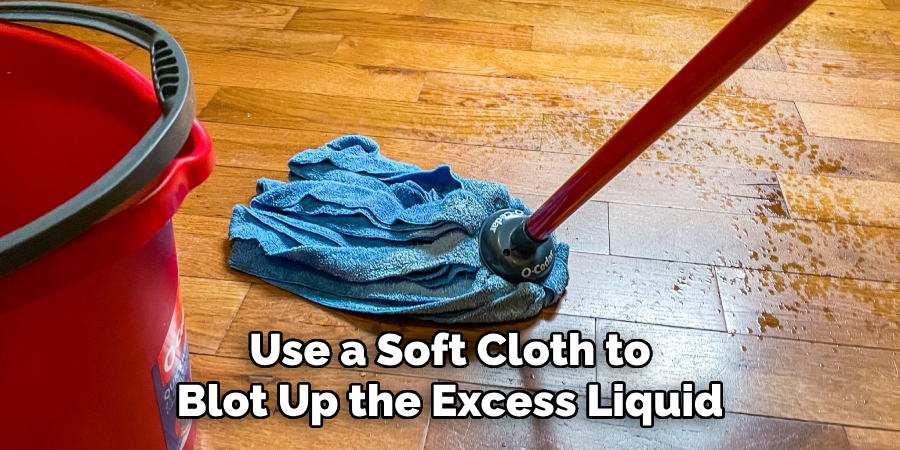
3. Sweep and Vacuum Regularly:
Small particles like dust, dirt, and food crumbs can easily build upon your kitchen floors and cause scratches over time. To avoid this, make sure to sweep or vacuum your wooden floors regularly using a soft bristle brush attachment. Avoid stiff-bristled brooms as they can scratch the surface of your floors. This will help keep your floors free from dust and debris, ensuring that they remain in top condition for years to come.
4. Use Furniture Pads:
Furniture can leave unsightly marks on wooden floors if not protected properly. Placing furniture pads under the legs of tables, chairs, and other pieces of furniture in your kitchen will prevent them from scratching or denting your wood flooring. Make sure to regularly check and replace these pads as they can wear out over time.
5. Refrain from Using High Heels:
High heels are notorious for causing damage to wood floors, as the narrow heel exerts a significant amount of pressure on a small surface area. This can result in dents or scratches on your beautiful wooden floors. Encourage your family and guests to remove their heels when entering the kitchen or provide them with house slippers to wear instead.
6. Trim Your Pet’s Nails:
If you have pets in your home, make sure to keep their nails trimmed regularly to avoid them scratching your wood flooring. Long nails can cause deep scratches and even gouges on the surface of your floors. It’s also a good idea to keep your pets off the wood floors as much as possible to prevent any potential accidents.
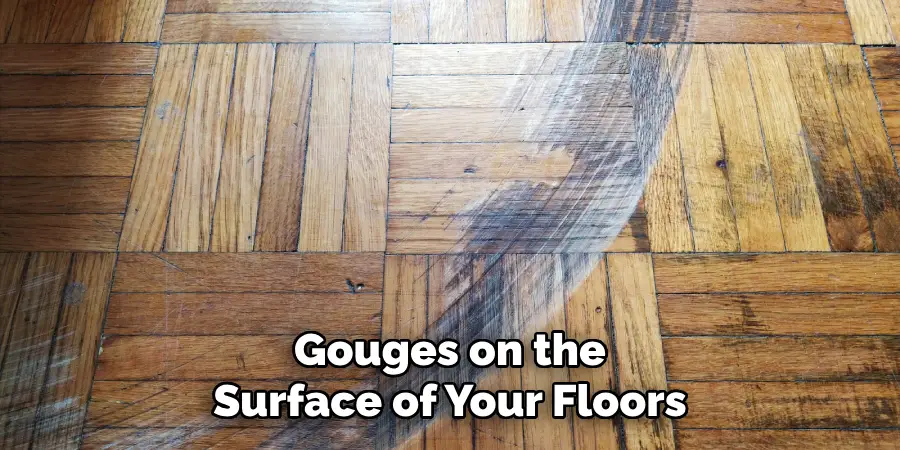
7. Use Area Rugs:
Strategically placing area rugs in high-traffic areas of your kitchen, such as near the sink and stove, can help protect your wood floors from wear and tear. These rugs can catch spills and crumbs, preventing them from damaging your floors. Just make sure to regularly clean the rugs to avoid trapping any debris that could still cause damage.
8. Avoid Direct Sunlight:
Prolonged exposure to direct sunlight can cause wood flooring to fade and become discolored over time. To prevent this, use curtains or blinds on windows in your kitchen to minimize the amount of sunlight that reaches your wood floors. You can also rearrange furniture or use area rugs to cover areas that receive a lot of sunlight.
9. Use Protective Coatings:
Applying protective coatings, such as sealant or wax, on your wood floors can add an extra layer of protection against spills and scratches. Be sure to use a product specifically designed for wood flooring and follow the manufacturer’s instructions for application and maintenance. This method can be beneficial for older wood floors that may have already experienced some wear and tear.
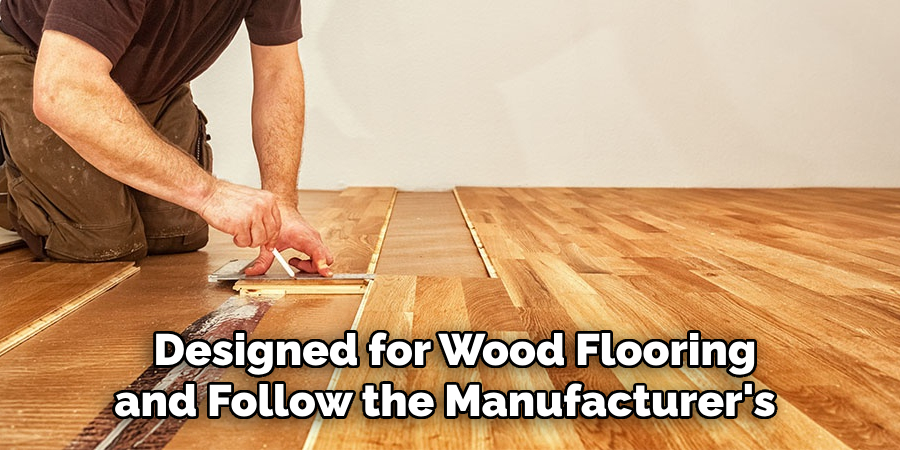
10. Regular Maintenance:
Lastly, the best way to protect your wood floors is to take good care of them with regular maintenance. This includes cleaning up spills immediately, sweeping or vacuuming regularly, and using protective measures like entry mats, furniture pads, and area rugs. By consistently following these maintenance routines, you can ensure that your wood floors remain in excellent condition for years to come.
Following these simple tips on how to protect wood floors in kitchen settings can help you preserve the beauty and integrity of your wood flooring. By being proactive and taking preventative measures, you can avoid costly repairs or replacements down the road.
So make sure to incorporate these practices into your cleaning routine for long-lasting, beautiful wooden floors in your kitchen. So go ahead and enjoy cooking in your kitchen without having to worry about damaging your wood floors.
Additional Tips and Tricks to Protect Wood Floors in Kitchen
1. Avoid using rubber mats or rugs with latex backing on your wood floors. This type of material can cause discoloration and damage to the finish.
2. Place felt pads under furniture legs to prevent scratches and dents when moving chairs or tables around.
3. Use a humidifier in your kitchen to control the moisture level and prevent the shrinking or expanding of the wood floorboards. This is especially important if you live in a dry climate.
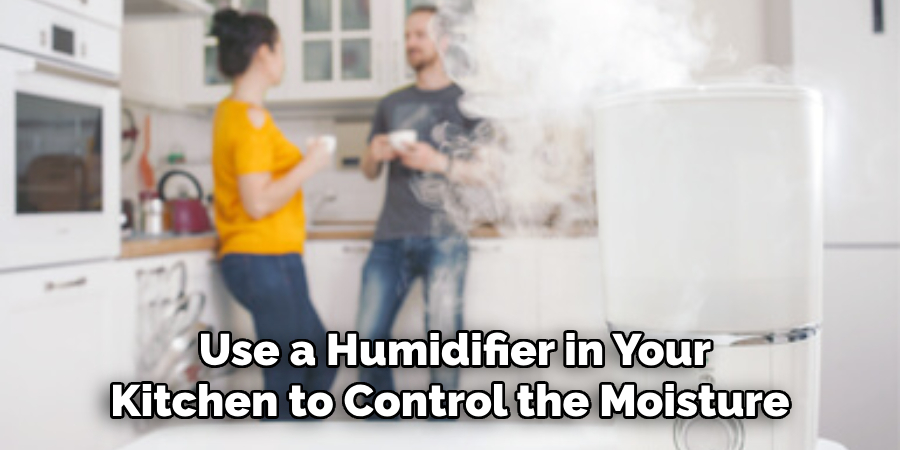
4. Regularly sweep or vacuum your wood floors to remove dirt and debris that can scratch the surface. Avoid using a vacuum with a beater bar attachment, as this can also cause damage.
5. Immediately wipe up spills and stains from your wood floors to prevent them from seeping into the wood and causing permanent damage. Use a soft cloth and a gentle floor cleaner recommended for use on wood floors. Avoid using harsh chemicals or abrasive cleaners.
6. Place doormats at all entrances to your kitchen to trap dirt and debris from your shoes before they can be tracked onto your wood floors. This will help prevent scratches and wear on the surface.
7. Trim your pet’s nails regularly to avoid scratches on your wood floors, especially if they spend a lot of time in the kitchen.
8. Consider using area rugs or runners in high-traffic areas of your kitchen to protect the wood floors from excessive wear and tear.
9. Avoid wearing stiletto heels or shoes with metal spikes on your wood floors, as they can cause dents and scratches.
10. Always use furniture pads when moving heavy objects or appliances across your wood floors to prevent damage.
Following these tips and tricks will help keep your wood floors in the kitchen looking beautiful and well-maintained for years to come. Remember to also regularly clean and polish your wood floors according to the manufacturer’s instructions for optimal protection. With proper care, your kitchen can be both functional and stylish with its gorgeous wood floors. So go ahead, and cook up a storm without worrying about damaging your precious flooring! Happy protecting!
Things You Should Consider to Protect Wood Floors in Kitchen
1. Consider the type of wood flooring you have installed in your kitchen. Knowing the type of wood will help you make informed decisions on how to protect it.
2. Sealants and finishes can help prolong the life of your wooden floors, especially in high-traffic areas such as the kitchen. It is recommended to use a water-based sealant or finish for easier maintenance and cleaning.
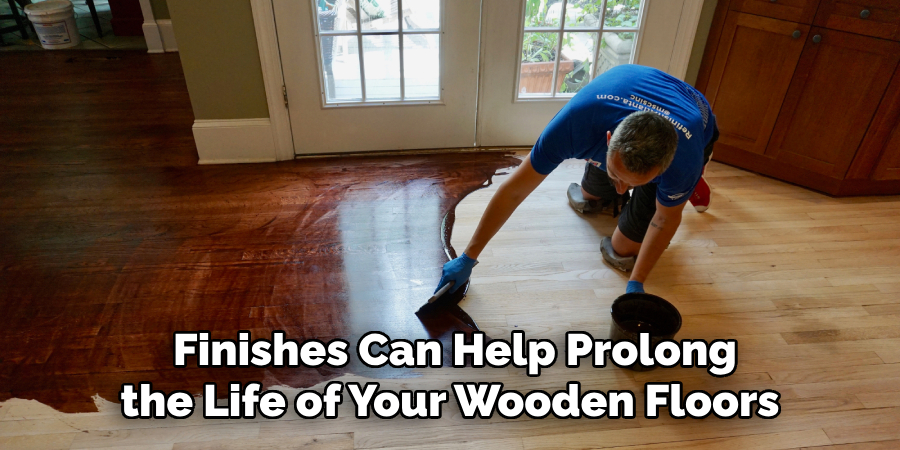
3. Consider placing rugs or mats in high-traffic areas, such as in front of the sink and stove, to prevent scratches and dents on the wood floors.
4. Wipe spills immediately to avoid water damage and discoloration of the wood floor. Use a soft cloth or paper towel for best results.
5. Avoid dragging heavy objects on the floor to prevent scratches. Use furniture pads or felt protectors under the legs of chairs, tables, and other furniture to prevent them from scratching the floor.
6. Regularly sweep or vacuum the kitchen floors to remove dirt and debris that can cause scratches over time.
7. Consider using a gentle hardwood cleaner specifically designed for wood floors to mop the floors periodically. Avoid using harsh chemicals or excessive water, as these can damage the finish and wood.
8. Use coasters or mats under potted plants to prevent water from seeping onto the floor and causing damage.
9. Consider using area rugs in your kitchen to add an extra layer of protection, especially in areas where spills are more likely to occur.
10. Monitor humidity levels in your home, as excess moisture can cause wood floors to warp and swell. Use a dehumidifier if necessary.
Following these considerations will help ensure your wood floors in the kitchen remain protected and beautiful for years to come. Remember to also regularly inspect your floors for any signs of wear or damage, and address them promptly to prevent further issues. With proper care and maintenance, you can enjoy the warmth and beauty of wood floors in your kitchen without worry. So keep these tips in mind and enjoy your stunning wood floors in the heart of your home. Happy protecting!
Frequently Asked Questions
How Often Should I Clean My Wood Floors?
It is recommended to clean your wood floors at least once a week, or more frequently depending on the amount of foot traffic in your kitchen. Regular cleaning can help prevent dirt and debris from scratching or damaging the surface of your floors. It is also important to promptly clean up any spills or messes to avoid moisture damage.
What Should I Use to Clean My Wood Floors?
When cleaning your wood floors, it is important to use a gentle cleaner specifically designed for hardwood surfaces. Avoid using harsh chemicals or abrasive cleaners, as they can strip away the protective finish and cause damage to the wood. It is also recommended to use a soft mop or cloth to avoid scratching the surface of your floors.
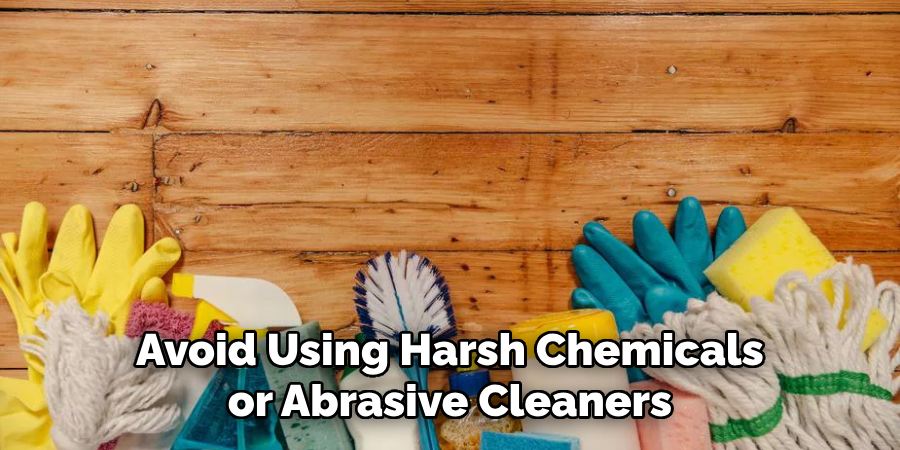
How Can I Protect My Wood Floors from Water Damage?
Water can be one of the biggest threats to wood floors in the kitchen. To protect against water damage, be sure to promptly clean up any spills or leaks. You can also use mats or rugs in high-traffic areas to catch any excess water and prevent it from seeping into the wood. It is also important to regularly check for any leaks or issues with plumbing that could lead to water damage.
Conclusion
All in all, knowing how to protect wood floors in kitchen is essential for maintaining their beauty and longevity. By taking simple steps such as regular cleaning, using the right products, and being mindful of potential water damage, you can ensure that your wood floors will continue to be a beautiful and functional part of your home for years to come.
If you have any further questions or concerns about caring for your wood floors, be sure to consult with a professional for personalized advice. So go ahead and enjoy your stunning wood floors in the heart of your home. Happy cooking!

